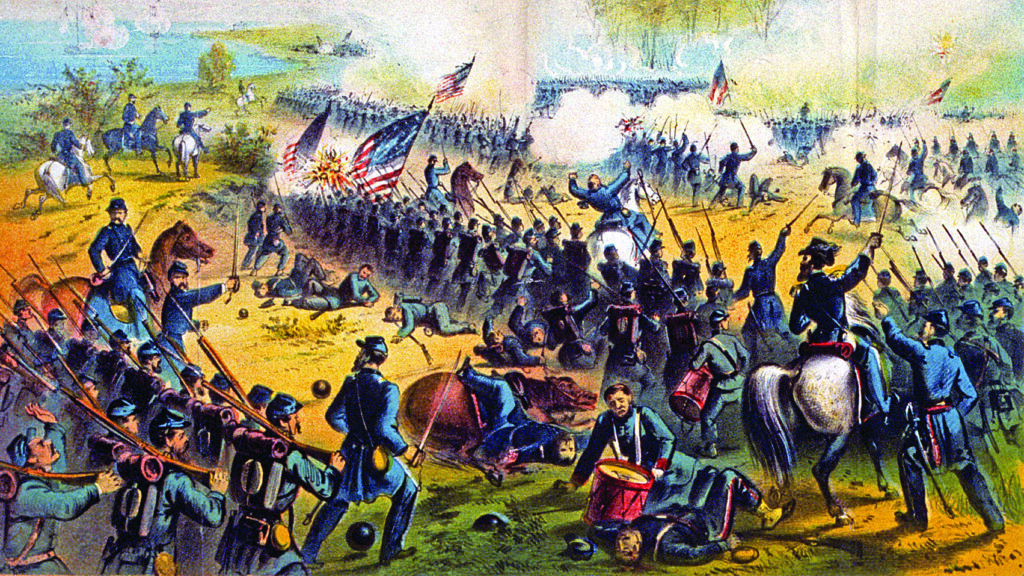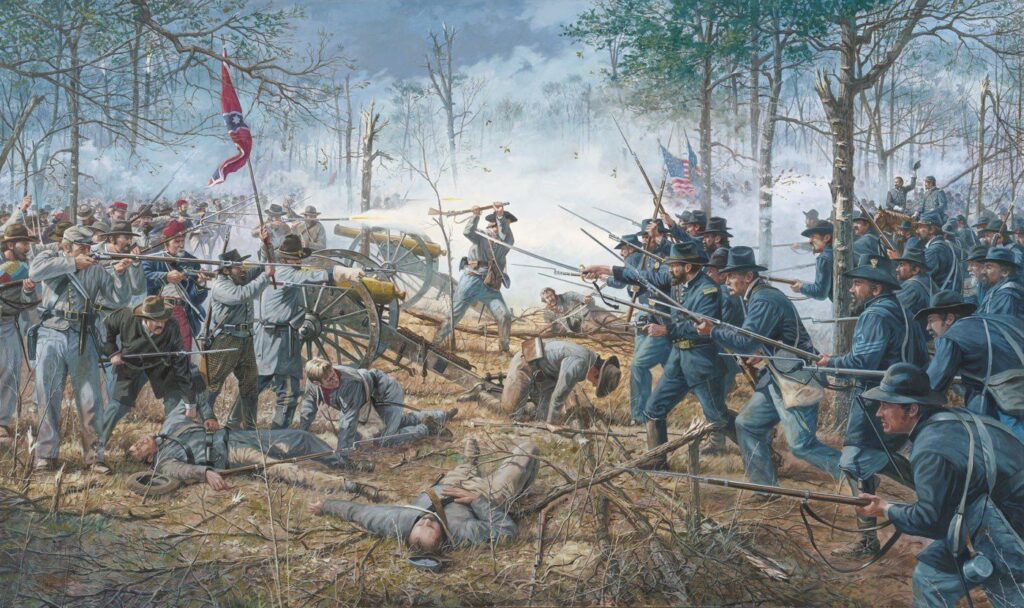The first year of the American Civil War wasn’t a great one for the Union Army. Losses at places like Bull Run and Ball’s Bluff overshadowed a string of smaller but equally important battles across the country. President Abraham Lincoln’s general-in-chief, George B. McClellan, was highly regarded by his men but was difficult to deal with, increasingly insubordinate, and failed to follow up on his victories.

However, a shining star was beginning to emerge in the Western Theater of the war. Ulysses S. Grant began the war in 1861 as a Colonel but was elevated to command a campaign along the Mississippi, Tennessee, and Cumberland Rivers by Maj. Gen. John C. Frémont. Grant, it would turn out, had the aggression necessary to take the fight to the rebels. He bloodied the Confederates at Fort Henry and Fort Donelson, the two most significant Union victories at the time, forcing the rebels out of Kentucky.
The Battle of Shiloh: The Bloody Turning Point
President Lincoln promoted Grant, now a media hero dubbed “Unconditional Surrender Grant,” who began massing Union troops from the Army of the Tennessee and the Army of the Ohio in preparation to push toward Vicksburg, Mississippi. Capturing Vicksburg meant splitting the Confederacy in two and giving the Union total control of the Mississippi River.
Standing in Grant’s way was a Confederate Army led by Albert Sidney Johnston. Johnston realized the Union army was waiting for reinforcements at Pittsburg Landing and decided to attack before it got bigger than it already was.
The rebel plan was to attack the Union left and push it back toward swampland, making it difficult for the force to maneuver. At the same time, it wanted to prevent any reinforcement or supplies from reaching the Federal forces. On the morning of April 6, 1862, the Union army was camped near a church called Shiloh when thousands of rebel soldiers came screaming out of the nearby woods, catching it unprepared.

The first Union troops to be attacked were under the command of Brig. Gen. Benjamin M. Prentiss and Brig. Gen. William T. Sherman. Though mostly raw recruits, Sherman led his division with a cool head and slowly moved his force back behind the church. Prentiss was saved by rebel soldiers who had stopped to loot his camp. The Union troops who did flee were stopped at Pittsburg Landing, where Grant had just arrived and was forming a counterattack while his troops began to dig in.
Confederate troops were pushing the Union left and right all day but taking massive casualties as Federal artillery poured into them during tactical withdrawals. The rebel commander, Albert Sidney Johnston, was shot during one of these engagements, bleeding out during an advance. He would be the highest-ranking soldier to die in combat during the war.
At the end of the first day, the new commander, Gen. Pierre G. T. Beauregard, saw his forces advancing, forcing the Union back to Pittsburg Landing. His troops had fought hard to take a thicket of oak trees dubbed “The Hornet’s Nest,” which led him to believe he would win the day.
As night fell on the battlefield, Beauregard ordered a stop to the rebel advance, believing he would destroy Grant the next day.

It was a critical error. U.S. Navy gunboats had arrived and began to harass the Confederates, attacking the Union left flank. The fighting at the Hornet’s Nest had bought Grant time to build up the defenses at Pittsburg Landing and reform the stragglers and survivors from the morning’s fighting. Most importantly, Don Carlos Buell’s army began to arrive that evening. When dawn broke the next day, the Union’s fresh defenses were manned by 54,000 men, while the Confederates’ tired, disorganized army only boasted 30,000.
But in “Unconditional Surrender,” Grant wouldn’t wait for Beauregard to attack. The next morning, Union troops came pouring out into the Confederate camp. The rebels stood their ground but, by noon, were falling back. The Hornet’s Nest fell to the Federal army, and despite repeated counterattacks, Beauregard was forced to fall back. By 3 p.m. on April 7, the rebel commander realized he was beaten and ordered a withdrawal.
The Battle of Shiloh: the Watershed Moment in Civil War History
Both armies suffered roughly equal casualties, including around 1,750 killed and more than 8,000 wounded. At the time, the Battle of Shiloh was the largest fought on American soil and the bloodiest of the Civil War to that point. Grant was heavily criticized for being caught off guard, but President Lincoln would not call for his resignation—he finally had a general who was willing to take the fight to the South.
Read About Other Battlefield Chronicles
If you enjoyed learning about the Battle of Shiloh, we invite you to read about other battlefield chronicles on our blog. You will also find military book reviews, veterans’ service reflections, famous military units and more on the TogetherWeServed.com blog. If you are a veteran, find your military buddies, view historic boot camp photos, build a printable military service plaque, and more on TogetherWeServed.com today.

0 Comments